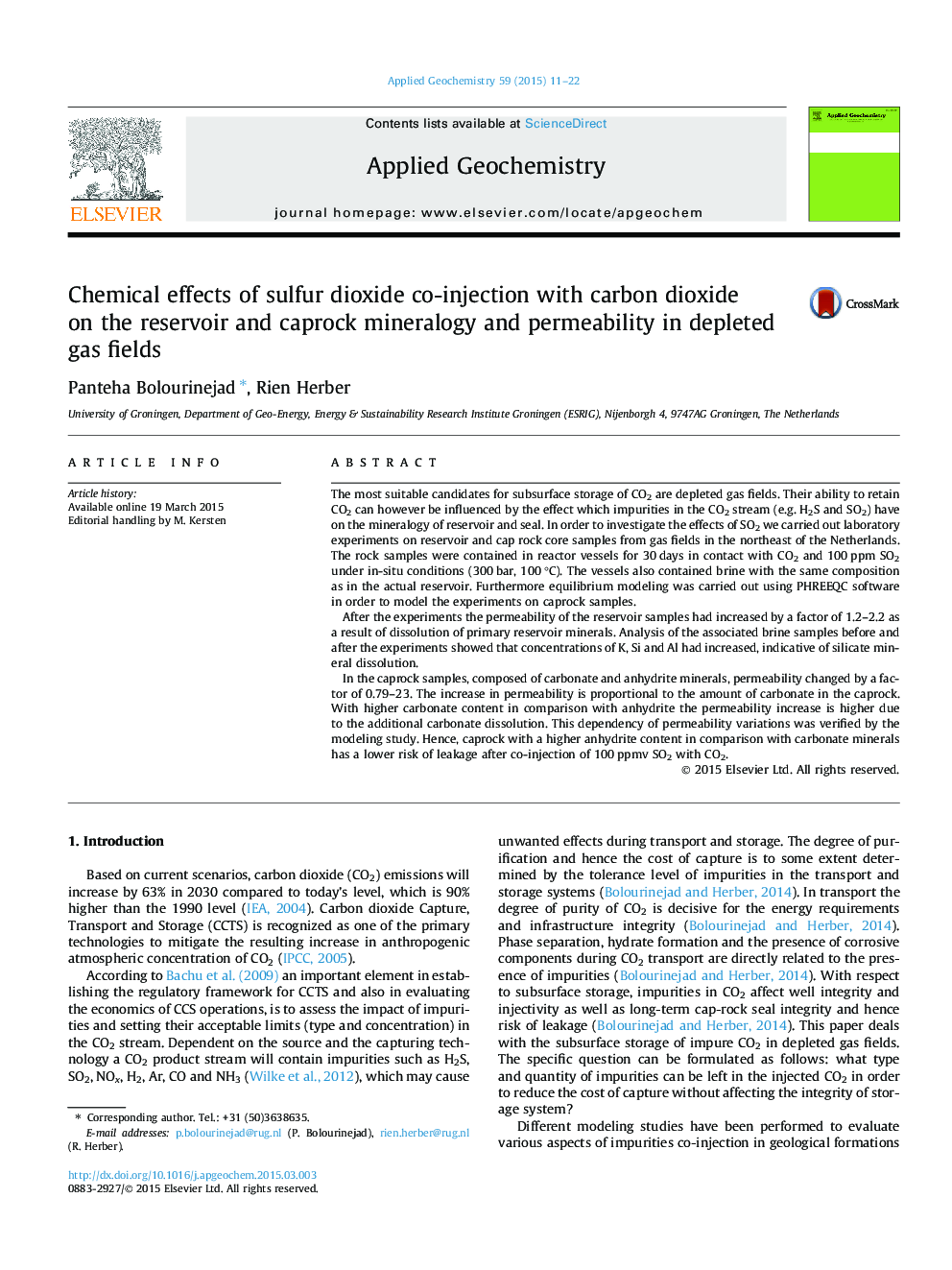| Article ID | Journal | Published Year | Pages | File Type |
|---|---|---|---|---|
| 4435667 | Applied Geochemistry | 2015 | 12 Pages |
•The effects of SO2 in the CO2 stream on core samples were determined experimentally.•Permeability of the reservoir increased by a factor of 1.2–2.2 after 30 days.•In the caprock permeability changes are related to carbonate/anhydrite ratio.•Dependency of permeability variations on the caprock composition was modeled.•The modeled results were in good agreement with the experimental results.
The most suitable candidates for subsurface storage of CO2 are depleted gas fields. Their ability to retain CO2 can however be influenced by the effect which impurities in the CO2 stream (e.g. H2S and SO2) have on the mineralogy of reservoir and seal. In order to investigate the effects of SO2 we carried out laboratory experiments on reservoir and cap rock core samples from gas fields in the northeast of the Netherlands. The rock samples were contained in reactor vessels for 30 days in contact with CO2 and 100 ppm SO2 under in-situ conditions (300 bar, 100 °C). The vessels also contained brine with the same composition as in the actual reservoir. Furthermore equilibrium modeling was carried out using PHREEQC software in order to model the experiments on caprock samples.After the experiments the permeability of the reservoir samples had increased by a factor of 1.2–2.2 as a result of dissolution of primary reservoir minerals. Analysis of the associated brine samples before and after the experiments showed that concentrations of K, Si and Al had increased, indicative of silicate mineral dissolution.In the caprock samples, composed of carbonate and anhydrite minerals, permeability changed by a factor of 0.79–23. The increase in permeability is proportional to the amount of carbonate in the caprock. With higher carbonate content in comparison with anhydrite the permeability increase is higher due to the additional carbonate dissolution. This dependency of permeability variations was verified by the modeling study. Hence, caprock with a higher anhydrite content in comparison with carbonate minerals has a lower risk of leakage after co-injection of 100 ppmv SO2 with CO2.
